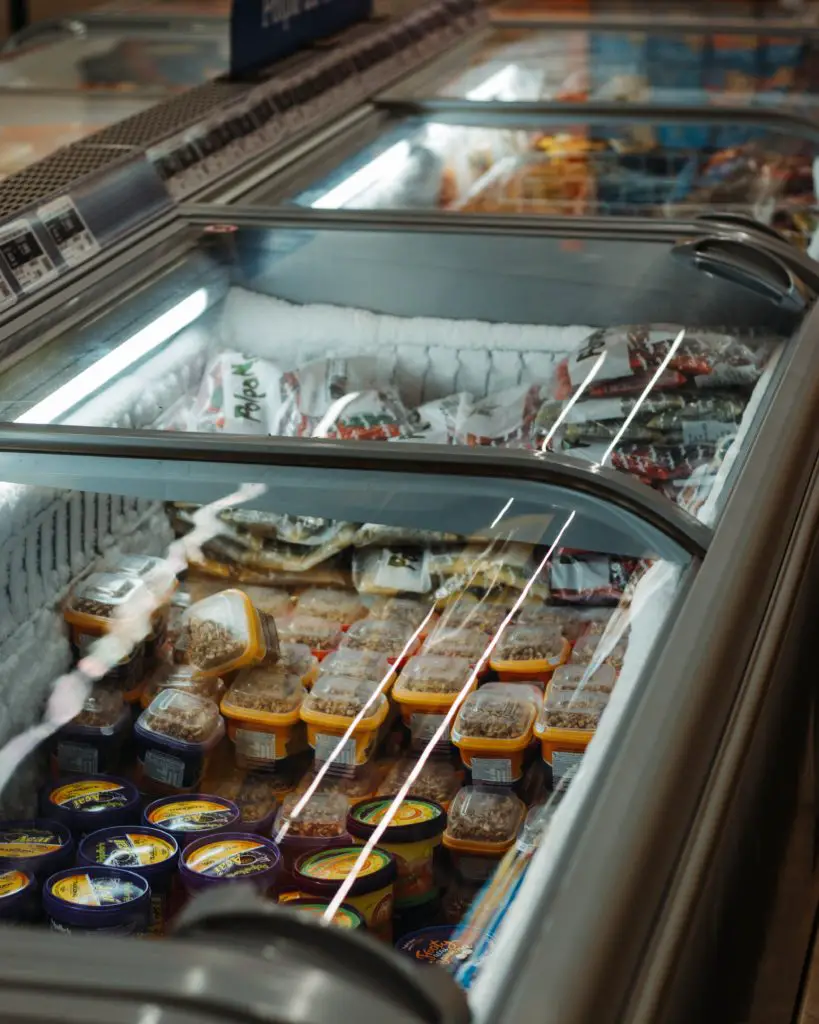Savor The Savings: Frozen Food Bargains At The Asian Supermarket
Frozen food can be so overpriced. One of the best ways to cut down the grocery store bill is to cut out prepared frozen food. I know they are convenient. But most of the time these items are lacking in nutritional value and are signicantly overpriced. This has only gotten worse in recent years as inflation has hit frozen food products especially hard. I know it is not easy to give these up. I am sucker for the Trader Joe’s frozen food aisle. Then I learned a secret about how to save money on frozen food. Savor the savings with frozen food bargains as the Asian supermarket.
Today, we embark on a journey through the aisles of the Asian supermarket, unveiling the secret to significant savings on frozen food. Prepare to discover a world of delectable delights that won’t strain your budget. Grab your shopping cart and let’s dive into the realm of frozen food frugality!
Related: Inflation Has Grocery Store Food Prices Rising

Asian Market Adventures: How To Save Money On Frozen Food
Delight your taste buds, explore new flavors, and savor the satisfaction of significant savings. Dive into a world of Asian appetizers, dumpling delights, sizzling stir-fry staples, seafood sensations, noodle nirvana, and exotic frozen fruits—all without breaking the bank
1. Asian Appetizer Abound
Get ready to tantalize your taste buds with a wide array of affordable Asian appetizers. From crispy spring rolls to savory dumplings, the frozen section of the Asian supermarket is a treasure trove of wallet-friendly delights. These bite-sized treats make for perfect party snacks or quick and easy meals that won’t break the bank.
2. Dumpling Delights
Indulge in the dumpling craze without emptying your pockets. This may be one of my favorite frozen food bargains at the Asian supermarket. These grocery stores offer an extensive selection of frozen dumplings, bursting with flavors ranging from traditional pork and vegetable to unique combinations like shrimp and chive. These versatile and convenient morsels can be steamed, boiled, or pan-fried, making them a frugal and delicious addition to your meal repertoire.
3. Sizzling Stir-Fry Staples
Save big on stir-fry ingredients by exploring the frozen section of the Asian supermarket. Discover an assortment of pre-cut and flash-frozen vegetables, including bok choy, bell peppers, and snow peas. These frozen gems not only retain their nutritional value but also offer tremendous convenience and cost savings compared to fresh produce. My new favorite dinner is cashew chicken stir fry!
4. Seafood Sensations
If you’re a seafood lover, the Asian supermarket’s frozen seafood section is a hidden gem. Score amazing deals on frozen shrimp, fish fillets, and squid. These high-quality offerings are perfect for creating restaurant-worthy dishes at home while keeping your budget intact. Whip up a delicious seafood stir-fry or savor succulent grilled fish without breaking the bank.
Related: Trader Joe’s Mandarin Orange Chicken: The Best Frozen Food
5. Noodle Nirvana
Explore the myriad of frozen noodle options at the Asian supermarket. From ramen noodles to udon and soba, you’ll find affordable and versatile choices that can elevate your dishes to new heights. Experiment with different flavors and textures to create budget-friendly stir-fries, soups, or cold noodle salads that will impress your taste buds and your wallet.
6. Exotic Frozen Fruits
Embrace the sweetness of frozen fruits at the Asian supermarket. Discover an assortment of tropical delights such as mango, lychee, or dragon fruit, all available at a fraction of the cost compared to fresh alternatives. These frozen fruits are perfect for smoothies, desserts, or simply enjoying a refreshing snack while keeping your budget intact.
Frozen Food Frugality: Why Frozen Foods Cost More Than Fresh?
One of the primary reasons frozen foods cost more than fresh is the preservation techniques involved. Freezing foods requires specific equipment, such as industrial freezers, to maintain low temperatures and preserve the quality of the products. The investment in infrastructure, energy consumption, and maintenance adds to the overall cost of frozen foods.
The process of freezing foods involves additional steps, including washing, blanching, cutting, and packaging. These processes ensure that the frozen products are safe, hygienic, and maintain their quality during freezing and storage. The cost of labor, machinery, and packaging materials contribute to the higher price of frozen foods.
Frozen foods require specialized storage and transportation to maintain the required low temperatures throughout the supply chain. This involves additional costs, such as refrigerated warehouses, refrigerated trucks, and specialized logistics. The need for temperature-controlled storage and distribution adds to the overall expense of frozen foods.
Related: Best Frozen Pizza Brand – Digiorno Frozen Pizza
Best Cheap Frozen Foods
- Vegetables: Frozen vegetables are typically inexpensive compared to fresh produce. You can find budget-friendly options like frozen peas, corn, green beans, and mixed vegetables. They are versatile and can be used in various dishes.
- French Fries and Potato Products: Frozen french fries, tater tots, and other potato products are usually affordable and widely available. They are convenient for quick snacks or side dishes.
- Frozen Poultry: Frozen chicken parts, such as chicken breasts, thighs, or drumsticks, are often more affordable than fresh poultry. They can be used in a variety of recipes and are usually sold in larger quantities, making them cost-effective.
- Frozen Breakfast Items: Frozen breakfast items like pancakes, waffles, and breakfast sandwiches can be reasonably priced. They are convenient for quick morning meals.
- Frozen Pizza: Frozen pizzas, especially basic cheese or pepperoni varieties, are often inexpensive compared to ordering from a restaurant or buying fresh pizza ingredients. They are a popular option for quick and affordable meals.
Why Are Frozen Foods So Expensive Now?
Inflation has hit frozen foods at the traditional grocery stores especially hard. This is another good reason to look for some frozen food bargains at the Asian supermarket. First off, the process of freezing and storing food requires energy, primarily in the form of electricity. When energy costs rise due to inflation, it can directly impact the production, freezing, and storage of frozen foods. Producers and distributors may need to increase prices to offset the higher expenses associated with energy. In addition, frozen foods often require cold storage facilities and refrigerated transportation to maintain their quality. Inflation can lead to increased costs for fuel, maintenance, and transportation infrastructure, affecting the overall supply chain. These increased costs can be passed on to consumers in the form of higher prices for frozen foods.

